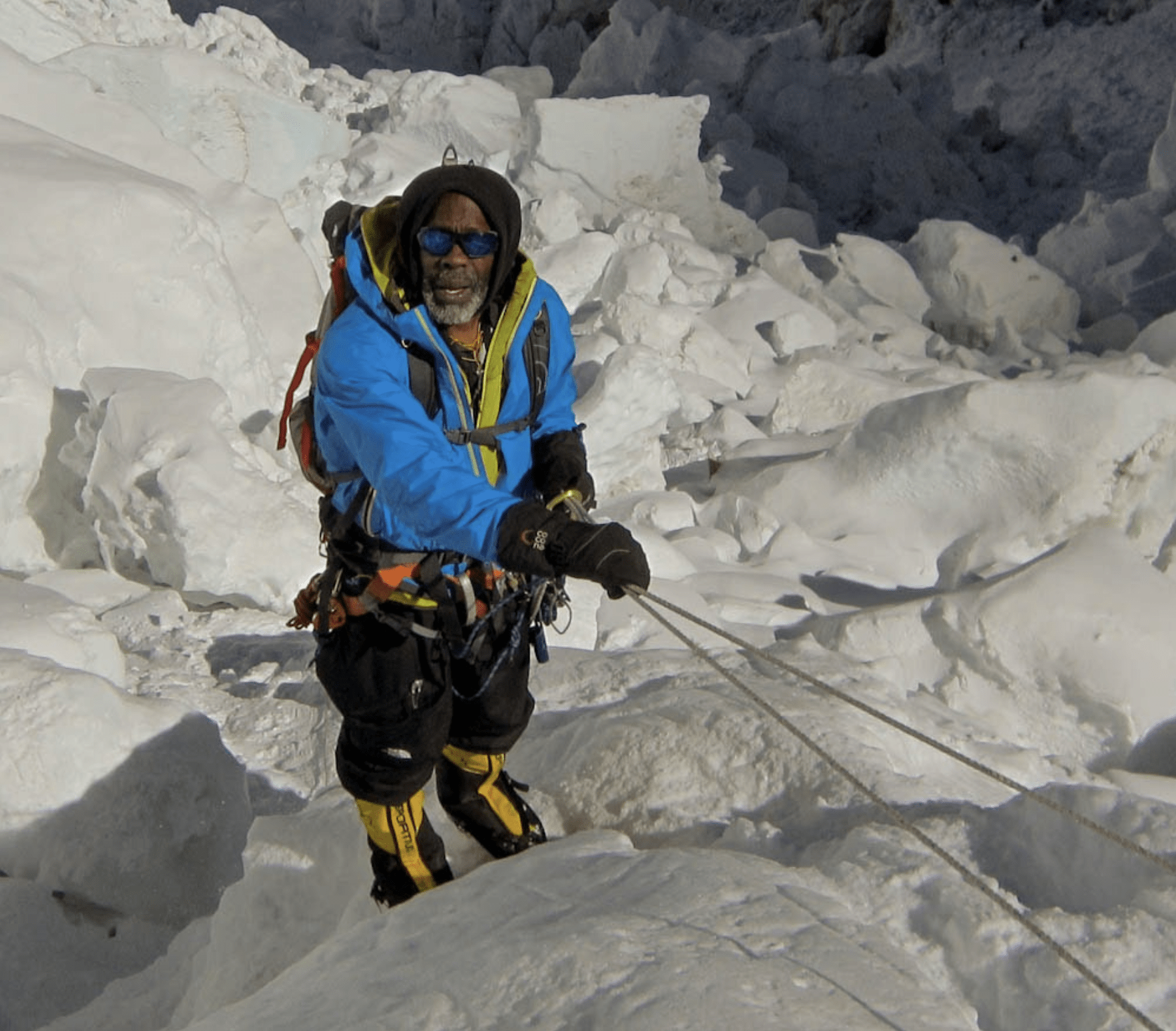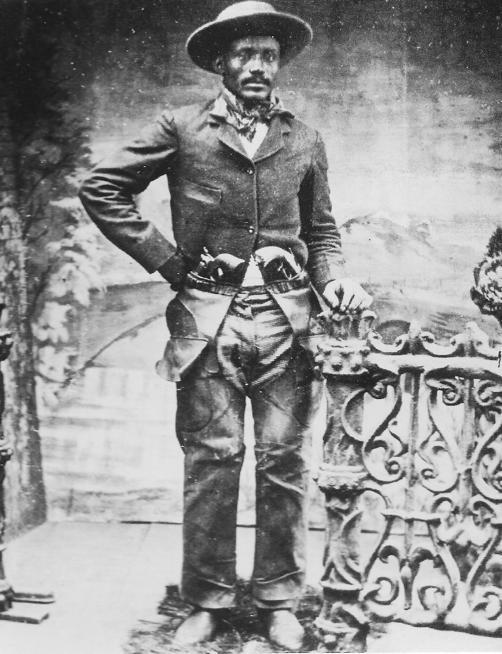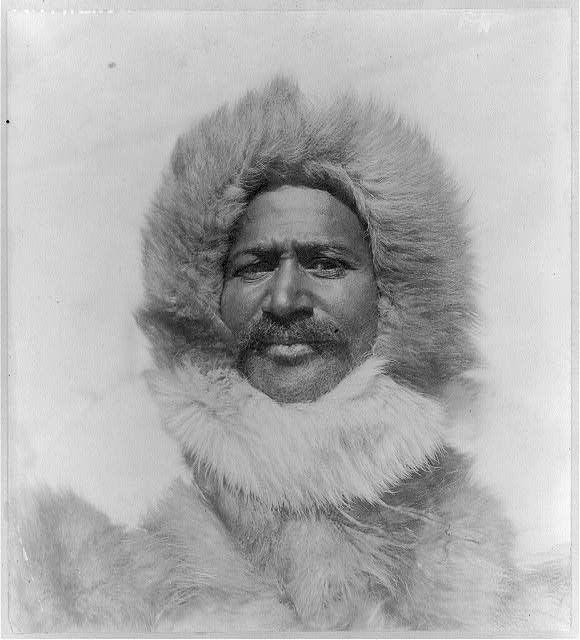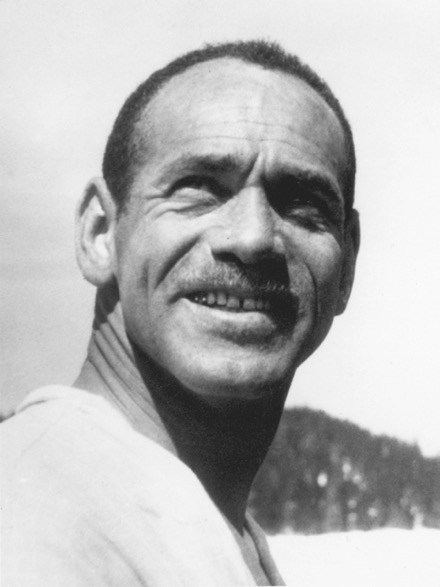WORDS: DONNY O’NEILL
On Wednesday, February 3, POW Athlete Alliance member, Phil Henderson, who has dedicated nearly thirty years of his life to the outdoor industry joined POW board member and renowned climber Conrad Anker on Instagram to talk about Black representation in the outdoors. This article expands on some of the individuals Phil referenced during the conversation, diving deep into the lives of a few of the Black explorers who adventured in the west before us.
While our two hosts looked to highlight prominent Black outdoor athletes that had an influence on Henderson in his life, Henderson noted that until the present day, there hadn’t been a large pool of famous Black outdoor athletes to learn from. Henderson cited the book, Follow The Free Wind, as an initial resource for him to connect with Black explorers of the past. The novel documented the life of former slave turned explorer James Beckwourth and helped Henderson realize that, during his travels exploring the western United States, he was following in the footsteps of Beckwourth and others, visiting the same places they had a century-and-a-half prior. Henderson wondered if Beckwourth felt similar things as himself, being among the only Black people in certain stretches of the west. This pushed Henderson to focus on the people, no matter how unheralded, that came before him, paving a path for the current generations of Black explorers and outdoors people. Henderson stressed the importance of bringing the names of these people to the forefront of people’s minds so they know the contributions of these historical figures who paved the way for today’s people of color to thrive in the outdoors. Through this education, in addition to learning about climate policy, the effects of climate change and civic engagement, Henderson believes the United States can make progress and change in the arenas of climate change, environmental racism and the health of our public lands, as they’re all topics that are inextricably tied together.
Henderson cited a few notable Black explorers, as well as present-day athletes, that we’ve highlighted below. Of course, a feature on prominent Black figures in the outdoors throughout history wouldn’t be complete without the story of Phil Henderson, which we’ve included among the list of pioneers.
Phil Henderson

Phil Henderson has spent nearly 30 years working in the outdoor industry, and his impacts in getting underrepresented people involved in outdoor recreation can’t be overlooked. A native of California, Henderson began his career in the outdoors as a whitewater rafting guide on the Stanislaus River, before spending over 20 years working with the National Outdoor Leadership School (NOLS) instructing whitewater kayaking, canoeing, rafting, backpacking, backcountry skiing and rock climbing. His experience in the outdoors runs the full gamut of activities.
While working with the Alex Lowe Charitable Foundation (ALCF) and the Khumbu Climbing Center (KCC) in Nepal, he assisted in training Nepali guides and passed along a lifetime worth of wisdom and leadership skills. Henderson has been a part of several high-altitude expeditions, including being the team leader of The North Face/National Geographic Everest Education Expedition. In 2013, he became the second Black person to summit Denali, North America’s highest mountain, and led an all-Black ascent of Mt. Kilimanjaro in 2018.
Based in Cortez, Colorado, Henderson brings nearly 30 years of experience, including involvement with environmental activism and interaction alongside the National Park Service, Bureau of Land Management and US Forest Service as he works alongside POW, to help elevate underrepresented voices in the world of the outdoors and climate advocacy. Henderson recently received the Lifetime Achievement Award from OutdoorAfro—a non-profit specializing in cultivating connection and leadership in nature for Black people. Being involved with the organization has given Henderson a group of people to mentor, who look up to him as a role model, and he relishes his role in continuing to inspire more people of color to enter the outdoors.
Sophia Danenberg
Henderson noted that while Sophia Danenberg was the first Black woman to summit Mount Everest, the tallest mountain on Earth, she still flies under the radar. He focused on the importance of uplifting her as a community to put her in a position where she can inspire the younger generation of Black female explorers, like Henderson’s daughter, to aspire for greater achievements in the outdoors and in life.
Sophia Danenberg, neé Scott, was born in 1972 and grew up in the Chicago, Illinois, suburbs. She studied environmental sciences and public policy at Harvard University (sounds like Danenberg and POW should get together for a date!), before working in green technology research at United Technologies in Connecticut. She was encouraged to try climbing in 1999 and was hooked from the get-go, embarking on numerous technical climbs organized through her local Appalachian Mountain Club chapter over the next two years.
Danenberg would go on to stand atop numerous famous peaks in the early 2000s, including Mount Rainier (Washington), Mount Kilimanjaro (Kenya), Mount Baker (Washington), Mount Kenya (Kenya), the Grand Teton (Wyoming), Mount Katahdin (Maine), Mount Denali (Alaska), Mount Tasman (New Zealand) and Ama Dablam (Nepal). That’s a solid dream list of peaks for any aspiring or established mountaineer.
On May 19, 2006, Danenberg became the first Black woman from anywhere in the world to reach the top of Mount Everest, despite enduring poor weather, a bout with bronchitis, frostbite on her cheeks and a clogged oxygen mask. Talk about determination.
All-in-all, Danenberg has successfully climbed four of the Seven Summits, the highest mountains on each continent: Everest (8,850 meters, Asia), Aconcagua (6,962 meters, South America), Denali (6,194 meters, North America) and Kilimanjaro (5, 895 meters, Africa).
Today, Danenberg is a role model for young Black female mountaineers and hopes to see Black participation in the sport increase exponentially in the near future. “I believe that in the next 10 or 15 years there will be more and more Black climbers,” Danenberg told BlackPast following her summit of Everest. “And as more Black people do it and teach their children and their environment, I expect the number of Black climbers to grow exponentially.”
James Pierson Beckwourth

James Beckwourth, circa 1860 (Public domain photo)
Phil Henderson was introduced to James Pierson Beckwourth through the book, Follow The Free Wind, a novel based on his life. Beckwourth was born into slavery in Virginia in 1805. His father, Jennings Beckwith, was a white English settler, who appeared in court on numerous occasions in favor of his son’s emancipation.
In the 1820s, Beckwourth was a blacksmith apprentice in St. Louis, Missouri, however, the allure of adventure proved too strong for him, and rather than continue along the path of blacksmithing, Beckwourth joined an expedition to explore the lead mines near the Fever River. Spurred by his newfound thirst for adventure, Beckwourth joined a trapping expedition to the Rocky Mountains in 1824, which would serve as the foundation of a life that saw him become a fabled explorer of the Mountain West.
Much of the story of James Beckwourth is sourced from his autobiography, The Life and Aventures of James P. Beckwourth, as well as the 1980 novel, Follow The Free Wind, which Phil Henderson stumbled upon and discovered that there were indeed Black explorers of the American West that helped pave the path for today’s wilderness adventurers.
Beckwourth’s life would unfold in a similar fashion to a Hollywood western. After being captured by the Crow tribe while trapping in 1828, he lived in their nation for eight years, where he rose to the rank of war chief. He engaged in bloody battles among Indigenous tribes, traded with the Cheyenne people in Fort Vasquez, Colorado, traveled up and over the rocky mountain passes of the Sangre de Cristo range into Taos, New Mexico and helped establish the town of Pueblo, Colorado. Sound like a film plotline, yet?
In the 1850s, Beckwourth pushed west to California during the Gold Rush, where he cemented perhaps the most tangible component of his legacy as a mountain explorer. In 1850, Beckwourth spied a depression in the Sierra Nevada mountains that he suspected to be a viable mountain pass. Uninterested in the prospect of gold discovery in the area, Beckwourth explored the route through the mountains. In his autobiography, he describes his intentions as such:
“We proceeded in an easterly direction, and all busied themselves in searching for gold; but my errand was of a different character: I had come to discover what I suspected to be a pass.”
Beckwourth worked on the trail tirelessly through the end of 1850 into 1851, and by that summer, led the first wagon train across what would become Beckwourth Pass into the town of Marysville. Beckwourth left a lasting legacy in this area as one of the first trail stewards in what is now the Lake Tahoe region, home to some of the best outdoor recreation in the entire country.
To learn more about the life and adventures of James P. Beckwourth, check out Follow The Free Wind.
Isom Dart

Isom Dart (Public domain photo)
While Phil Henderson was living in Vernal, Utah, he often grappled with the fact that he was among the only Black people in that part of the country. A friend showed him the gravesite of Isom Dart, and Henderson would ride his dirt bike to the area, using the grave as a place of remembrance to feel a connection with people like him who had pioneered exploration in the area in the past.
Born a slave in Arkansas in 1849, Isom Dart would go on to become a legendary outlaw that would drift across a wide swath of the west from Texas to Colorado, Wyoming and Utah. After gaining his freedom following the Civil War, Dart found work as a camp cook in Rock Springs, Wyoming, where his legendary desperado distinction was earned after a feat involving his pistol and five sage chickens; we’ll spare you the details.
Like many of the trappers, traders and hunters that frequented the camp in Rock Springs, Dart followed a nomadic lifestyle, moving on to work as a rodeo rider, then horse thief and cattle rustler on the Texas-Mexico border. In 1875, he departed the outlaw lifestyle and bought a ranch in present-day Brown’s Park, Colorado, on the banks of the Green River. Today, Brown’s Park is familiar to rafters who travel down the Green from Utah into Colorado and is a coveted camping and hiking destination.
Unfortunately, Dart was shot and killed by notorious law officer Tom Horn after refusing to vacate his ranch at the request of larger cattle companies. Dart was buried in an isolated gravesite in Moffat County, Colorado.
Matthew Henson

Matthew Henson, circa 1910
Image: Library of Congress Prints and Photographs Division
Henderson cited Matthew Henson while making a point that Black people, and Americans in general, don’t learn about the influential Black explorers that made an impact on the country’s history. Rather, names like Tom Horn or Butch Cassidy are commonly referred to in teachings about the history of the western United States, in particular. But, Matthew Henson was the first person to reach the geographic North Pole. Knowing his name is about as important as learning to read a map or lace-up hiking boots when it comes to understanding the broad history of life in the outdoors.
If expeditions to the far reaches of the planet interest you (safe to assume that’s a fact) then Matthew Henson should definitely be on your radar. Born to sharecropper parents freed prior to the Civil War, Henson spent much of his early years near Washington D.C. In 1887, while working as a sales clerk in a department store, a customer named Robert Peary hired him as a personal valet. It just so happened the customer was working on the Nicaragua Canal at the time, and so began Henson’s exploration of the world.
In 1891, Henson accompanied Peary on an Arctic expedition, serving as a navigator and craftsman. Henson is most famous for the 1908-09 expedition to the geographic North Pole. Of everyone in the party, Henson was said to have reached the spot on the map first. While later research has called into question the veracity of the claim to have reached the North Pole, the feat was nevertheless monumental for the time.
Henson published a memoir from the expedition, titled A Negro Explorer at the North Pole, and his accolades grew as his life progressed. He was the first Black person to be made a lifetime member of The Explorers Club, was awarded the Peary Polar Expedition Medal and was invited to the White House by both Presidents Harry Truman and Dwight Eisenhower. The National Geographic Society posthumously awarded him the Hubbard Medal for distinction in exploration, discovery and research in 2000.
Charles Crenchaw

Charles Crenchaw (Public domain photo)
It wasn’t until Henderson was embarking on Expedition Denali, an all-Black trip to summit the highest mountain in North America, that he learned about Charles Crenchaw. Think about that, for a second. The first Black mountaineer to summit Denali in 1963, wasn’t widely known in the circle of mountaineering until 2012! Again, Henderson stressed the importance of bringing these Black mountaineers to the forefront in order to understand how they paved the way for today’s outdoor explorers of color.
After serving as Master Sergeant in the U.S. Army, maintaining airplanes flown by the Tuskegee Airmen, the first black military aviators in the Army, Charles Crenchaw became one the most influential mountaineers in history. Crenchaw spent much of his life in the Pacific Northwest, where he first developed a passion for the sport of climbing and joined the Seattle Mountaineers, a volunteer group dedicated to educating people and helping them explore, conserve and enjoy the natural areas of the Pacific Northwest. His mountaineering aspirations were even featured in the November 1963 edition of Ebony magazine, which also included coverage of the March on Washington, where Martin Luther King Jr. delivered his “I have a dream” speech.
Crenchaw’s claim to fame occurred in 1963 when he was invited by Alvin E. Randall to join an expedition to climb Denali via the Karstens Ridge route in 1964. On July 9, 1964, Crenchaw became the first Black person to summit the highest peak in North America. How perfect was it that the first ascent of Denali by a Black man occurred in the same year the Civil Rights Amendment was signed into law?
In 2013, a team of Black climbers set out to follow in Crenchaw’s footsteps by summiting Denali and, in turn, encourage minority youth to explore a life of outdoor recreation and act as role models for those seeking lives intertwined with environmental protection. Phil Henderson was among the group that stood atop the roof of North America, and he became the second Black mountaineer to summit Denali, after Crenchaw.
